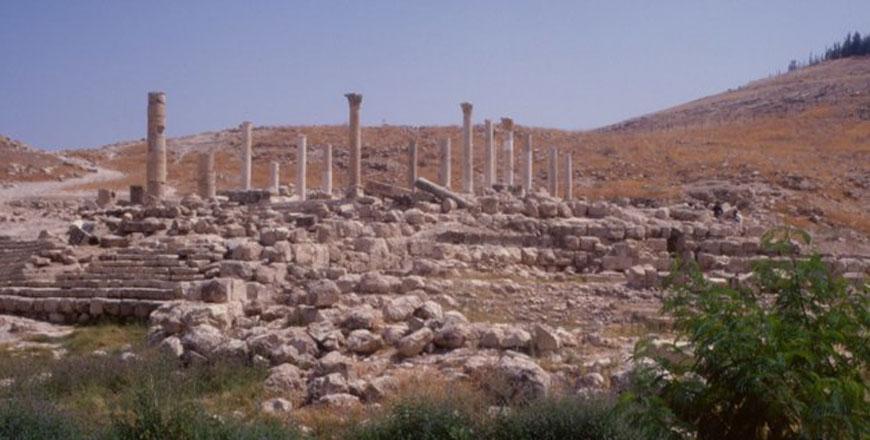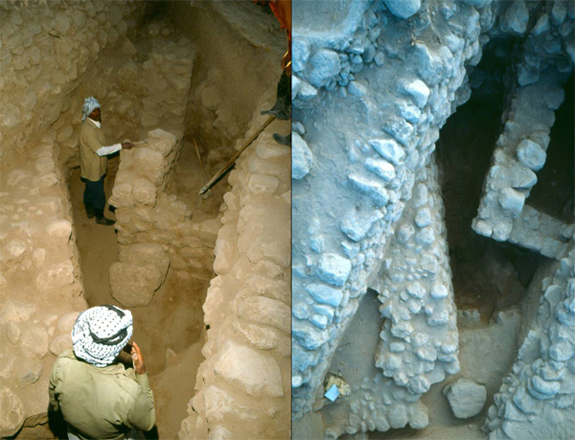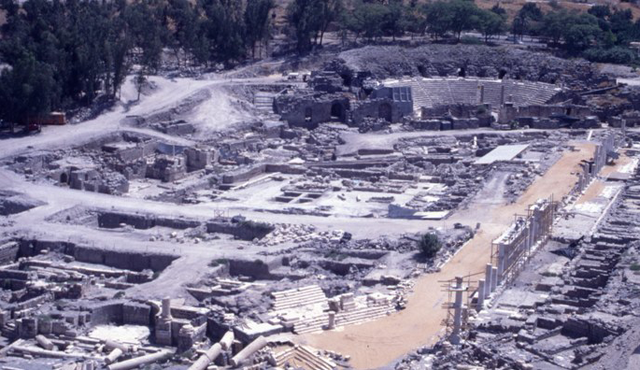You are here
Ancient life in Levant: Revealing Pella’s urban wonders
By Saeb Rawashdeh - Jul 06,2024 - Last updated at Jul 06,2024

The church and monumental staircases in Pella (Photo courtesy of ACOR)
AMMAN — Pella, located in north-western Jordan, has been a site continuously occupied from the Neolithic times to more recent periods. The Hellenistic period was the most thoroughly studied, although a systematic archaeological excavation of the major urban centres of the Classical, Late Antique and Early Islamic period reveals significant results.
The focus has been put on the spectacular public monuments: Temple, street, bath, theatre, circuit wall and church for instance, which still visually dominate the archaeological landscape of such sites and, admittedly, impress the casual visitor noted the scholar Alan Walmslay from Macquarie University in Sydney.
“A sizable area of housing was uncovered at the eastern end of the main archaeological mound [tell] at Pella [Tabaqat Fahl], during the diggings from 1979 to 1983, by the University of Sydney,” Walmslay said, noting that the excavations of the eastern tell encompassed an area of almost 2000 metres square.
It has been possible to reconstruct room contents, and therefore function, by analysing the finds from the different deposits based on their original room location. The clearest example of an operating household at the time of the massive 749AD earthquake is a large and wealthy unit known as “Household G”.
The Australian team reconstructed a daily life of people living in that structure and found a cooking installation on a bench against the west wall, a stone water trough and, placed against walls, feed benches for the stabled animals.
“Further evidence for stabling was found to the north, in two interconnecting rooms separated by a step and arches on piers. The discovery of the skeletons of animals caught in the sudden collapse of the building, specifically cattle and small equids, probably mules, along with a cat and chickens was conclusive evidence for this interpretation,” Walmslay underlined, adding that this room also produced a range of objects in daily use, including pottery and evidence for an iron-banded wooden bucket in the northeast corner, indicating that the victim, whose skeleton was also found, lived in the room, at least temporarily.
While predominately concerned with animal husbandry and industrial functions, at least at the time of the building’s destruction in 749AD, the scholars found Umayyad coins dinars were recovered in 1981 immediately next to the crushed skeleton of a young male and were probably contained in a leather purse which had decayed.
“As Early Islamic dinars always carry a mint date, they provide a useful chronological fix, with dates of 714, 715, 724, 735AD, and in the courtyard, six further dinars were recovered at the end of the 1982 season, dating to 709, 728, 739 and 740AD, Walmslay underlined, adding chronologically, however, the best dating came from a copper fols of Damascus minted in 744AD that is just five years before the historically-attested earthquake,” he elaborated.
The carbonised fabric was also found and such material is rarely preserved in Jordan, due to the usually abundant winter rains and resultant soil formation processes, but following the collapse of the building much of the courtyard area caught fire, causing the clothing of the two victims to be burnt into more decay-resistant carbon, Walmslay explained.
“What was most remarkable was the subsequent analysis of the charred fabric, which revealed it to be silk. Also recovered were copper objects, including kohl sticks and a basin, blown glass vessels with ribbon trailing, bone buttons with incised lines, and domestic stone items including grinders and a two-part basalt quern for grinding grain into flour,” Walmslay stated.
Household G at Pella presents a vivid picture of the daily life in the mid-8th century in the Levant region.
It was a wealthy house, with decorated living rooms upstairs and well-off inhabitants carrying precious coinage and wearing expensive clothes, and a downstairs which also served a primary economic role seen in the stabling of high-value animals and in the economic role seen in the stabling of high-value animals and in the presence of a small workshop, Walmslay concluded.
Related Articles
AMMAN — According to the researcher Larry Herr, the Iron Age II A represented the 10th century BC, the Iron Age II B period lasted between t
AMMAN — Earthquakes have been the most devastating events that shaped the lives of civilisations and individuals during history.
AMMAN — Pella, an ancient site located approximately 100 kilometres northwest from Amman, was discovered in 1818 by Charles Irby and James M


















